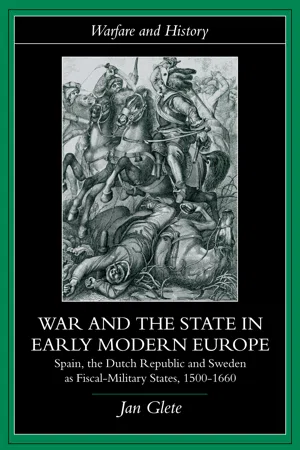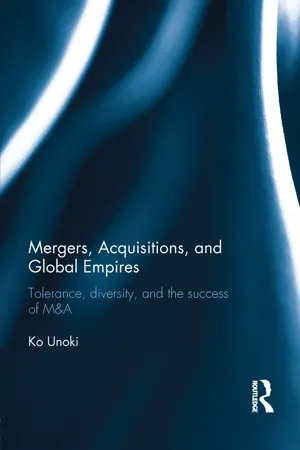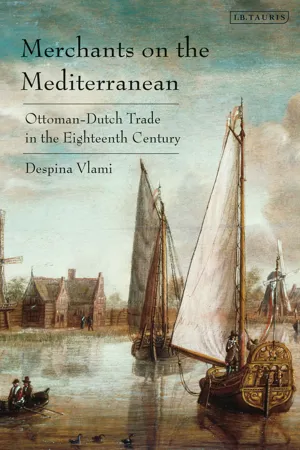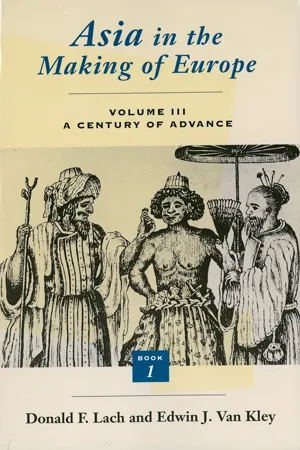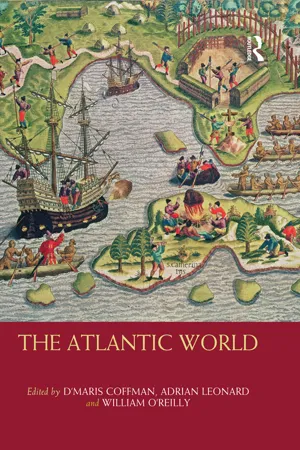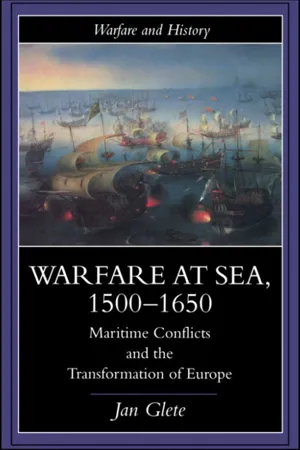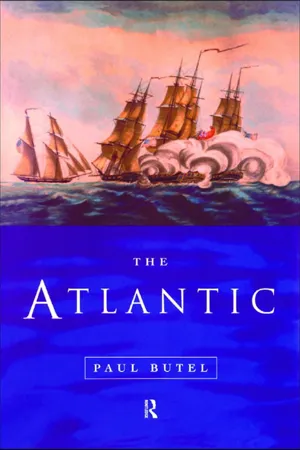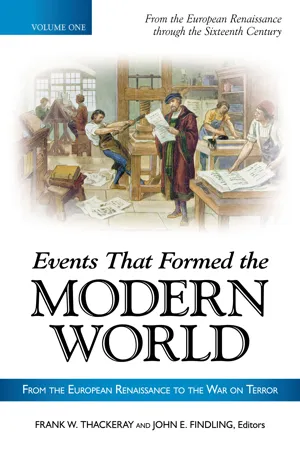History
Dutch Maritime Empire
The Dutch Maritime Empire refers to the period of Dutch dominance in global maritime trade and exploration during the 17th century. It was characterized by the establishment of trading posts and colonies in various parts of the world, including the East Indies and the Americas. The Dutch East India Company played a significant role in expanding and maintaining this empire.
Written by Perlego with AI-assistance
Related key terms
10 Key excerpts on "Dutch Maritime Empire"
- eBook - ePub
To Govern the Globe
World Orders and Catastrophic Change
- Alfred W. McCoy(Author)
- 2021(Publication Date)
- Haymarket Books(Publisher)
The Dutch Republic also became Europe’s first avowedly secular state, assuring freedom of worship to all its citizens, advancing science without religious restraint, and grounding its governance in universal principles of law. The fusion of these forces established Dutch corporations and their navy as the world’s most powerful imperial enterprise, controlling a far-flung maritime domain spanning four continents. Although this small state could not sustain such an expansive global reach for more than a fleeting half century, the Dutch union with England after 1688 would help steer that latter nation more resolutely in the direction of maritime commerce and naval power—catalyzing trends that would culminate in the British imperial age.The Dutch Republic aspired to religious tolerance, social equality, and economic vitality, making it a precursor for Europe’s modern democracies. Its empire in Asia and the Americas was, however, another matter, refusing to grant its colonial subjects the same rights. Britain developed a similar duality, practicing a form of democracy at home grounded in civil liberties and property rights, while acquiring an overseas empire on the basis of slavery and imperial conquest. Thus, the Dutch and British may have supplanted the Portuguese and Spanish empires in the seventeenth century, but they perpetuated and perfected several essential attributes of the Iberian age.In an assembly convened in 1618 to resolve theological conflicts within Protestantism, known as the Synod of Dordrecht, the Dutch Reformed Church adopted the Calvinist doctrine of “divine election,” which held that certain individuals and groups were favored by God’s protection. According to that logic, the Dutch, as God’s elect, could struggle confidently against enormous adversity to win their independence from Spain, while denying that same freedom to subjects overseas who lacked such divine grace. Specifically, the Synod ruled that a slave’s conversion to Christianity did not confer freedom, implicitly affirming the morality of slavery. As a result, for much of the seventeenth century, the Dutch would, in good conscience, dominate both the transatlantic slave trade and the production of sugar on slave plantations, while using slave labor throughout their Indian Ocean empire, whether in the cultivation of spices in eastern Indonesia or on farms in South Africa. Even in the late eighteenth century, when Enlightenment ideals inspired an abolition movement in England, the Dutch attitude was largely unaffected, and they continued to trade slaves without restraint until the British finally forced them to stop.9 - eBook - ePub
War and the State in Early Modern Europe
Spain, the Dutch Republic and Sweden as Fiscal-Military States
- Jan Glete(Author)
- 2002(Publication Date)
- Routledge(Publisher)
33 In 1639, it won one of the most decisive victories ever achieved in a major naval battle against Spain—Portugal in the English Channel, and in 1658–59 it saved Denmark from possible extinction as an independent state by Sweden. In 1667, it attacked the British fleet in its bases, in 1672–73 it waged a very successful defensive campaign against the combined fleets ofFrance and England, and in 1688 it achieved an invasion of England in an excellently administered surprise mobilisation of a major fleet. From a European perspective, the Dutch navy is a favourite candidate for the accolade ofmost successful naval organisation ofthe seventeenth century.From a long-term perspective, maritime supremacy is normally accompanied by naval supremacy. Most historians who have studied Venice and England as dominant powers in maritime trade associate this with a strong navy. Was the Dutch Republic an exception—a maritime economy that rose to supremacy during a long war without developing a navy capable of protecting its trade and enforcing its will on the enemy? Furthermore, why are we supposed to believe that the influence of Dutch mercantile interests was negative for the Dutch navy, when similar influences in other maritime powers are regarded as positive links between economic, naval and imperial policies? In English history, the Elizabethan navy has usually been regarded as efficient because it could profit from private experience in shipping, technology and maritime violence. The mid-seventeenth-century navy of the English Republic, administered by mercantile interest groups and officered by ship-masters from the merchant marine, was the only navy that actually defeated the Dutch (in 1652–54).34 In the Spanish navy, as we have already seen, it was the American convoy system, administered together with mercantile interests in Seville, that worked best, and that the Spanish monarchy from the 1620s attempted to improve the navy by introducing provincial squadrons in Castile in the hope that local interests and sentiments would make the navy better.35 The Dutch navy, administered from the world’s largest centre for maritime enterprise, is supposed to have been notoriously inefficient and a victim ofthe lack ofa central bureaucracy in the Hague.It would be interesting to study all these supposed shortcomings of the Dutch navy in a comparison with other seventeenth-century navies. In all probability, the result would be that it was above average in most qualitative aspects, and that several of the reported shortcomings are actually misunderstandings of how early modern navies normally worked. However, this section is only a brief interpretation of Dutch fiscal-military history, in which the navy is a central part in explanations of Dutch successes in trade and as a European great power. There was nothing unusual or inherently contradictory in the Dutch navy and its relations to Dutch political and economic development. It was a normal, powerful navy of a leading maritime power, very large in proportion to the size of the population, and it was used to protect Dutch trade and to disturb that of competitors and enemies. Its infrastructure was related to a dynamic maritime economy and its interest groups, and that normally meant savings in transaction costs. Whenever possible, it was used as an instrument of policy to give the Dutch Republic leverage in European power politics. It was also, just like the army, a result of Dutch society’s unusual ability to mobilise financial resources through its fiscal-military system and concentrate them for the creation of permanent armed forces of a magnitude that was achieved by other European states only if they had a far larger population (see Table 4.2 - eBook - ePub
Mergers, Acquisitions and Global Empires
Tolerance, Diversity and the Success of M&A
- Ko Unoki(Author)
- 2012(Publication Date)
- Routledge(Publisher)
3 A seafaring empire
The rise of the Dutch East India Company
Introduction
In 1602, a group of trading companies based in the territories known as the Low Countries of Europe in the Middle Ages, which today encompass modern Belgium, Luxembourg, northwest France, and the Netherlands, merged to create what arguably became the most successful trading company of the seventeenth and eighteenth centuries. At its zenith, the Verenigde Oostindische Compagnie (the United East India Company, or VOC) established a commercial empire in Asia which allowed them to challenge and roll back Spanish and Portuguese dominance of the Asian spice trade, hold the English at bay, and monopolize the lucrative export trade in cloves, nutmeg, and mace. Through its “regional headquarters” in Batavia (present-day Jakarta, Indonesia), which served as the hub for VOC trading posts in Asia, the company engaged in a profitable inter-Asia trade, exchanging Japanese silver and copper, Chinese gold and silk, and Indian textiles. The VOC launched 1,700 ships in the seventeenth century and 3,000 in the eighteenth.1 Between 1602 and 1700, more than 300,000 people sailed from Europe on these ships; from 1700 to 1795, the number of people traveling on VOC ships exceeded 650,000.2Eventually, with changing consumer demand and the subsequent demise of the spice trade, the Anglo-Dutch wars, the growth of English sea power, and the rise of the English East India Company (EIC), the VOC went into a gradual decline and finally disbanded in 1799. Despite its end, however, the company’s performance spanning two centuries was impressive. The gross margin of the VOC from 1640 to 1700 was 64 percent, declining to a still respectable 59 percent from 1700 to 1795.3 From the year of its founding, the VOC was paying dividends to its investors that averaged 18 percent per year, with a standard minimum rate set at 12.5 percent.4 Total dividend payments up to 1650 were reported to be eight times the original investment amount, and the annual rate of return to a shareholder up to 1650 was 27 percent.5 Over the entire period, an incredible 99 percent of the VOC’s net profits was distributed to shareholders.6 In 1670, the VOC was arguably the richest company in the world, paying its shareholders dividends of 40 percent on their investments, employing over 80,000 people of various nationalities including 30,000 soldiers, and possessing a fleet of 200 trading ships.7 Between 1602 and 1733, the stock price of the VOC rose gradually from par (100) to a peak of 786.8 Such rises in stock value combined with generous dividends helped to make major shareholders such as the Dutch citizen and mayor of Amsterdam, Dirck Bas, very wealthy.9 - eBook - ePub
Merchants on the Mediterranean
Ottoman-Dutch Trade in the Eighteenth Century
- Despina Vlami(Author)
- 2023(Publication Date)
- I.B. Tauris(Publisher)
21Under the pressure of the Anglo–French commercial rivalry, the Dutch trading activity languished definitively. According to Andrea Metrà, the crisis of Dutch commerce and navigation since the eighteenth century was also related to three very important structural factors of the country’s economy. First, the Dutch Republic lacked natural resources that would allow local industries to thrive; second, the government’s customs policy was directed steadily towards the support of commerce and imports against local manufacture and industry. Finally, the Dutch Republic had known great progress as the ‘broker’ and the ‘carrier’ of Europe. The maritime and financial market of Amsterdam, in particular, was very vulnerable to the protectionist policies adopted by many European countries. The aforementioned English navigation laws, and the customs policies adopted by not only France and Britain but also other lesser countries like Sweden, gave a very strong blow to the Netherlands by not allowing it to continue to operate as Europe’s intermediary, a role it had operated with great success.22Until the mid-eighteenth century, the ports of North Germany, Bremen, Altona, but mostly Hamburg, gradually replaced Amsterdam. As has already been mentioned, in 1750 the volume of sugar, coffee and indigo arriving to Hamburg from France was three times greater than that arriving to the Dutch port. The same applied to overland trade, as the old commercial routes passing through the Netherlands were replaced by others connecting commercial centres directly with ports. The advanced Dutch shipping industry was no longer a Dutch achievement and for what concerned the cost of the freights, since the mid-eighteenth-century French and British merchant ships were offering equally low prices with the Dutch to those merchants who wished to charter their ships to carry their merchandise.23 - eBook - ePub
Asia in the Making of Europe, Volume III: A Century of Advance. Book 1
Trade, Missions, Literature
- Donald F. Lach, Edwin J. Van Kley(Authors)
- 2022(Publication Date)
- University of Chicago Press(Publisher)
180The elevation of the United Provinces to the level of the most important shipping and trading center of Europe was led by Holland and Zeeland, the two provinces most involved in maritime trade and industry. The shipbuilding industry centered in these two provinces had been firmly established by the fourteenth century and went through its greatest period of innovation in the late sixteenth. Dutch shipbuilders concentrated from the beginning upon constructing fishing and merchant vessels, generally from Baltic timber. To the time of the Spanish Armada (1588) the Dutch vessels sent on convoy duty were converted merchantmen. To meet the Spanish challenge the Dutch organized admiralties which began the construction of warships. Private shipbuilders, left to their own devices, continued to turn out commercial vessels in constantly mounting numbers and of standard designs that were readily adaptable to particular requirements. Finally, in the late sixteenth century they developed and perfected the fluit , a long-distance cargo vessel of three to five hundred tons that provided the Dutch with a cheap means of transportation, enabling them to take the lead in northern Europe’s carrying trade.181Wherever the Dutch went in Asia they carried shipwrights with them to build small cargo vessels to reduce the need to carry goods of inter-Asian trade in European vessels. The warships and larger cargo vessels were generally built in Holland.182 Since the fluit was not armed, it could not function under the dangerous maritime conditions prevailing in the Indian Ocean trade. To satisfy their needs in Asia the Dutch built pinnaces, larger and more heavily timbered vessels that had a deeper draft and were in fact the warship version of the fluit . They were sturdier and more heavily armed than the native craft, and faster and more maneuverable than most of the other armed merchantmen. The pinnace gave the Dutch a marked advantage in inter-Asian trading over the native vessels and the larger armed merchantmen of their European rivals.183 - eBook - ePub
- D'Maris Coffman, Adrian Leonard, William O'Reilly, D'Maris Coffman, Adrian Leonard, William O'Reilly(Authors)
- 2014(Publication Date)
- Routledge(Publisher)
Empires of the Atlantic World: Britain and Spain in America, 1492–1830 , Yale University Press, New Haven.Emmer, P. 1998, The Dutch in the Atlantic Economy, 1580–1880 , Ashgate, Farnham.Emmer, P. & Klooster, W. 1999, ‘The Dutch Atlantic, 1600–1800: expansion without Empire’, Itinerario , vol. 28, no. 2, pp. 48–69.Games, A 2006, ‘Beyond the Atlantic: English globetrotters and transoceanic connections’, William and Mary Quarterly , vol. 63, no. 4, pp. 675–92.Games, A 2011, Web of Empire: English cosmopolitans in an age of expansion, 1560–1660 , Oxford University Press, Oxford.Gould, E. 2007, ‘Entangled Histories, Entangled Worlds: the English-speaking Atlantic as a Spanish periphery’, The American Historical Review , vol. 112, no. 3, pp. 764–86.Hakluyt R. Deane C. (ed.) 1877, A particular discourse concerning the great necessitie and manifold comodyties that are likely to growe in this Realme of England by the Western discoveries lately attempted , Maine Historical Society, Cambridge [Mass].Israel, J 1990, Dutch Primacy in World Trade, 1585–1740 , Oxford University Press, Oxford.Israel, J 1997, Conflicts of Empires: Spain, the Low Countries and the Struggle for World Supremacy, 1585–1713 , Continuum, London.Kayll, R. 1615, The Trades Increase , Nicholas Oakes, London.Klooster, W. 2011, ‘The Northern European Atlantic World’ in Canny N. Morgan P., The Atlantic World, c.1450–c.1850 , Oxford University Press, Oxford.Koot, C. J. 2011, Empire at the Periphery: British colonists, Anglo-Dutch trade, and the development of the British Atlantic, 1621–1713 , New York University Press, New York.Lunsford, V. 2005, Piracy and Privateering in the Golden Age Netherlands , Palgrave Macmillan, New York.Mancall, P. 2007, Hakluyt’s Promise: an Elizabethan obsession for an English America , Yale University Press, New Haven.Mancke E. Shamms C. (eds.) 2005, The Creation of the British Atlantic World , Johns Hopkins University Press, Baltimore.Mc.D Beckles, H. 1998, ‘The “Hub of Empire”: the Caribbean and Britain in the Seventeenth Century’, in Canny N. (ed.), The Origins of Empire: British overseas enterprise to the close of the seventeenth century - eBook - ePub
Warfare at Sea, 1500-1650
Maritime Conflicts and the Transformation of Europe
- Jan Glete(Author)
- 2002(Publication Date)
- Routledge(Publisher)
7MARITIME STATE FORMATION AND EMPIRE BUILDING IN THE BALTIC
From mercantile to monarchic sea power
This chapter is a brief description of the decline of the German Hanse as an economic, political and naval organisation as well as of maritime aspects of Danish and Swedish state formation. It also gives a violence–control orientated explanation of the rise of the Dutch trade hegemony in the Baltic. It describes how the new Nordic naval forces were used for territorial state building but also as instruments for selling protection where the increasingly centralised Nordic monarchies were able to enforce a practical joint monopoly of violence at sea in the Baltic. Denmark–Norway and Sweden became effective rulers of their own territories (thus making piracy impossible) and used their warships to discourage various Baltic interest groups from interfering with trade. The main loser was the city of Lübeck which lost its old position as middleman between the Baltic and Western Europe. The most obvious winners were the Dutch who could send large numbers of cheap and unarmed merchantmen to the Baltic without interference from competitors. But most towns around the Baltic as well as the territorial states also benefited from lowered transport costs and increased competition between merchants from the Baltic and Western Europe.1In the late Middle Ages, the Baltic had been a region where political and military power had been strongly connected with trade and the control of markets. The role of territorial states had been very limited in comparison with the population and resources of the territorial societies. The states in the Baltic were the Nordic union (Denmark, Sweden and Norway), the Polish–Lithuanian union, the North German principalities (Pomerania, Mecklenburg and Holstein) and the German Order (the Teutonic knights) which controlled Estonia, Livonia, Courland and Prussia. The Nordic union, which for some decades in the early fifteenth century had been a strong political unity, was gradually developing into a single Danish–Norwegian state ruled by a king and the aristocracy, and a Swedish state ruled by various aristocratic factions. The Nordic states had long coasts and were dependent on maritime lines of communication both for trade and the transfer of resources and military power within their territories. - eBook - ePub
- Paul Butel, Iain Hamilton(Authors)
- 2002(Publication Date)
- Routledge(Publisher)
Having experienced an uncontested zenith in their economic activity, based largely in the Atlantic, the United Provinces saw their growth slow down between 1650 and 1672, in the course of international disturbances aggravated by the war between Louis XIV’s France and the Dutch Republic in 1672. Their Hansard and English rivals (the former using neutrality from the outset of the conflict, the latter doing likewise from 1674 rushed to take advantage of their difficulties. The time of the United Provinces’ economic hegemony was at an end.If the Dutch Atlantic had never experienced a ‘reversal of the secular tendency’ (Braudel), but maintained its prosperity beyond the 1650s, then neither were the British and the French to undergo a turn-around in economic circumstances in the Atlantic. There were transferrals of power and, at the end of the seventeenth century, the maritime Atlantic, if not colonial, had come to be dominated by England, which had brought its ‘apprenticeship’ to an end when it became aware of a commercial revolution based on two principal elements, namely, a spectacular growth in exports to Europe, and the increasing movement of capital, often of foreign (Dutch) origin, necessary to the development of commerce.Dutch participation in the Iberian Atlantic, 1609–1621
Barely two years before the signing of the Twelve Years’ Truce between Spain and the United Provinces, a project to create a Dutch West Indies Company was put forward. Supporting this so as to make it an organ of warfare in the New World, the merchants of Middelburg, Amsterdam and Rotterdam also intended to develop the Guinea trade and the trade with Iberian America. Zeeland forts appeared during the same period on the Guyana coast and at the mouth of the Amazon. The states of Holland and Zeeland received petitions demanding that they undertake to send a convoy of troops and arms to these settlements. The Middelburg Zeelanders were the most zealous in wanting to pursue war, having made great use of privateering and illicit trade activities on the coasts of Brazil and the Spanish Main since the 1590s. Their spokesman was William Usselinx, who, when he published his pamphlet A Demonstration of the Necessity, Utility and Profit for the Low Countries of Preserving Freedom of Trade with the West Indies - Om Prakash, Om Prakash(Authors)
- 2020(Publication Date)
- Routledge(Publisher)
For a general picture of Indonesian trade in the period of Anglo-Dutch intervention in the first half of the seventeenth century the writings of J. C. Van Leur and Bernard Schrieke are of great value. While Schrieke has sketched in outline the major developments in pepper and spice trade, Van Leur has tried to visualize the structure of Asian trade in the archipelago area. The handicrafts of India and China were exchanged for the forest and garden products of Indonesia in a far-flung peddling trade in goods of small bulk and high value. Long distance trade was interwoven with port to port trade confined to the archipelago. Merchant princes sent out slaves and pedlars with ccmmenda money. Sometimes the coastal princes and officials also took part in trade either directly or indirectly.The Dutch and the English had come to Indonesia around 1600 primarily as buyers of pepper and spices. Their arrival touched off a big scale international rivalry in eastern as well as western Indonesia. The Spanish and the Portuguese strongholds were attacked. At the same time the Dutch fought the English all around the archipelago. It was clear that in pursuing trade the Dutch were not prepared to restrict themselves to peaceful competition alone. Trade became dependent upon war. Dutch policy of combining war with trade led to a number of results.Emergence of Dutch Military Power
In the first half of the seventeenth century the growth of Dutch military power went hand in hand with economic penetration. Yet in order to isolate the economic consequence of Dutch intervention in Indonesia it is necessary to use the military exploits as a backdrop. Amboina was seized by the Dutch in 1605 and Banda Neira was taken in 1609. In a final attempt to subjugate the Bandas the entire population was deported and done away with in a bloody campaign in the 1620’s. The Portuguese fortress in Solor fell to the Dutch in 1613 and Malacca in 1641. The high-handed activities of the Dutch aroused strong resistance among the Indonesians. Around 1646 a revolt in Hitu was suppressed. The Moluccas were firmly brought under control in 1663 when the Spanish finally withdrew from Ternate. Tidore submitted to Dutch power in 1667. Meanwhile a prolonged battle was going on with the Macassarese sultanate of Gowa, who were finally subjugated with the help of the Bugis in 1669.After the fall of Malacca the Dutch utilized Johor and the Minangkabau chiefs to bring about a re-ordering of politics in western Indonesia. By 1666 the power of Acheh was seriously curbed. In 1677 the Dutch acquired a commanding position in the island of Java. Bantam was finally subordinated in 1684. By the middle of the eighteenth century Dutch authority was firmly established over Java and Madura. Throughout this period the English remained a source of irritation for the Dutch. After the Amboina Incident of 1623, the English had been eliminated as competitors from the spice islands. They, however, managed to give effective competition to the Dutch from Macassar, Bantam and later Bencoolen. As the power of the Dutch grew in the archipelago area the English shifted their interest more and more to India and virtually withdrew from Indonesian trade.- eBook - ePub
Events That Formed the Modern World
From the European Renaissance through the War on Terror [5 volumes]
- Frank W. Thackeray, John E. Findling, Frank W. Thackeray, John E. Findling, Frank W. Thackeray, John E. Findling(Authors)
- 2012(Publication Date)
- ABC-CLIO(Publisher)
Perhaps the most important legacy of the East India Company’s activity in the seventeenth century is that it created significant English commercial interests in Asia. Protecting these interests had already led to conflict with the Portuguese and the Dutch. During the eighteenth century, defending them against the French had the effect of adding political, military, and strategic considerations to the older commercial ones. This in turn led to the creation of the British Empire in Asia, which in the nineteenth and twentieth centuries dominated much of the continent from the Middle East to Malaysia. Not coincidentally, this empire was to center on India, the old seat of the East India Company’s trading activities.Selected Bibliography
Andrews, Kenneth R. Ships, Money and Politics: Seafaring and Naval Enterprise in the Reign of Charles I . Cambridge: Cambridge University Press, 1991. Studies of English shipowners and shipping, and their relationship to the state during the first half of the seventeenth century.Andrews, Kenneth R. Trade, Plunder, and Settlement: Maritime Enterprise and the Genesis of the British Empire 1480–1630 . Cambridge: Cambridge University Press, 1984. The ways in which English overseas activity was affected by the changing needs of London merchants and investors in the sixteenth and seventeenth centuries.Arasaratnam, Sinnappah. Merchants, Companies, and Commerce on the Coromandel Coast 1650–1740 . Delhi: Oxford University Press, 1986. Indian merchants and their trade with Europe and Southeast Asia, especially in the seventeenth century.Blussé, L., and Femme Gaastra, eds. Companies and Trade: Essays on Overseas Trading Companies during the Ancien Régime . Leiden: Leiden University Press, 1981. Studies of English, Dutch, French, Portuguese, Danish, and Brandenburg overseas trading companies in the seventeenth and eighteenth centuries.Bowen, H. V., Margarette Lincoln, and Nigel Rigby, eds. The Worlds of the East India Company
Index pages curate the most relevant extracts from our library of academic textbooks. They’ve been created using an in-house natural language model (NLM), each adding context and meaning to key research topics.

